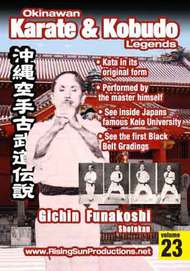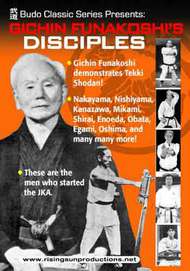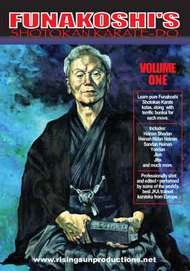Gichin Funakoshi
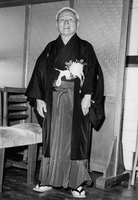
Gichin Funakoshi founded Japanese ShotokanKarate-Do, perhaps the most widely known style of karate, and he is referred to as the "father of modern day Japanese karate". He also trained in both of the popular styles of Okinawan karate of the time: Shorei-ryu and Shorin-ryu.
Funakoshi was born in Shuri, Okinawa. He was trained in classical Chinese an d Japanese philosophies and teachings. He started as assistant teacher, progressing to instruct the lower grades. He then transferred to Naha, the seat of government, as instructor in the higher grades. Funakoshi was also noted for his poetry, and philosophies.
Funakoshi was a student of both Anko Itosu and Anko Asato, and taught Karate in Okinawa. By the late 1910s he had many students a few of whom were deemed capable of passing on his teachings. In 1922, Funakoshi joined Itosu, and Asato and other Okinawan masters in introducing karate to the Japanese mainland. He taught karate at various Japanese universities and became honorary head of the Japan Karate Association upon its establishment by his students in 1949. JKA was led by Masatoshi Nakayama one of his senior students.
On September 1, 1923, the Great Kanto Earthquake struck Tokyo. In the raging fire that followed the quake, the capital was reduced to ruins. Funakoshi’s dojo escaped destruction, but many of his students vanished in the holocaust of falling and blazing buildings. With the passage of months, Tokyo began to rebuild.
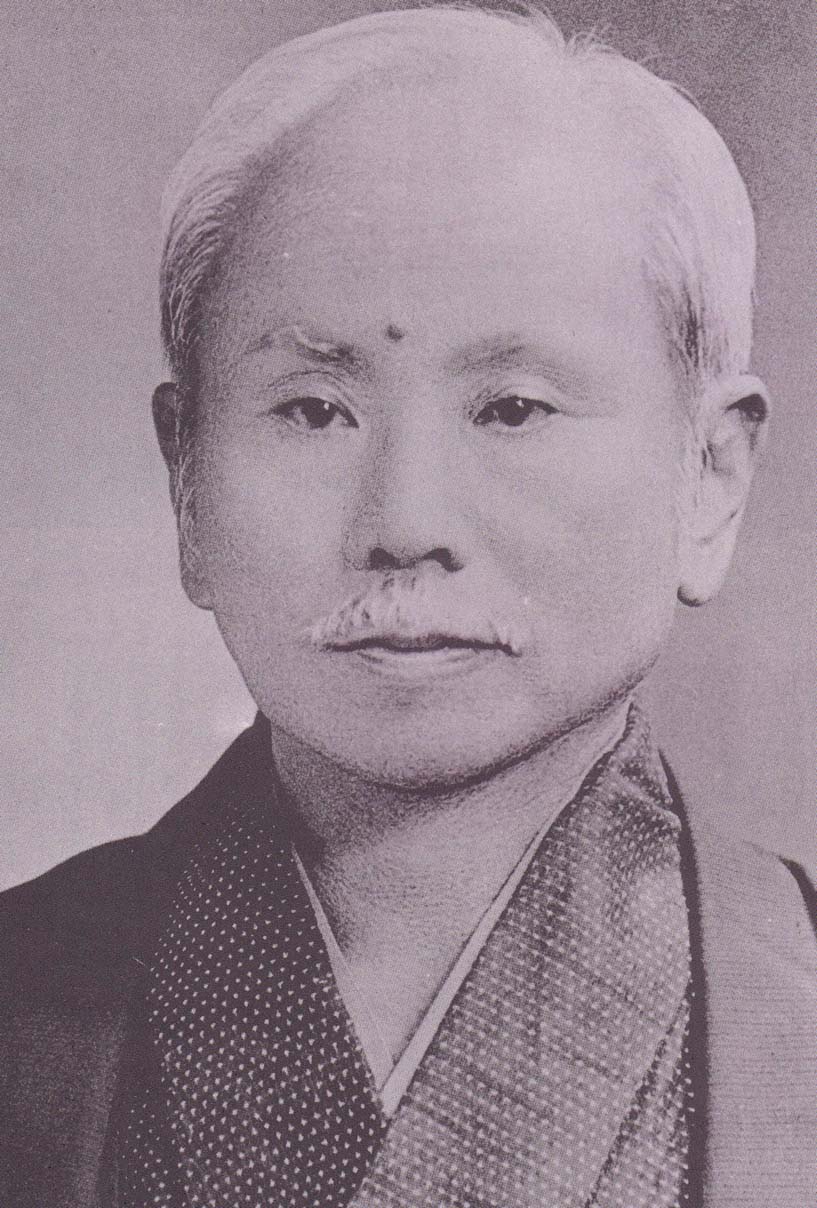
While in Japan, Funakoshi developed Shotokan karate, a style named after his poetry pen name, Shoto, which means "waving pines", and Kan means training hall. The name was coined by Funakoshi's students in 1936 when they posted a sign above the entrance of the new training hall at which Funakoshi taught. The karate dojo, the first ever erected in Japan, was funded from nationwide supporters.
With the unprecedented interest in karate came a demand for written reference materials on karate-do. Enlisting support from masters Azato and Itosu and other colleagues, and drawing on his own experience, Funakoshi began to write. He published several books in 1922, which enjoyed widespread popularity, and were subsequently revised. In 1935 he published a book focused on the various katas. Weekly and monthly magazines also begin to interest themselves in karate, the subtle art of self defence.
Funakoshi was then 70 years of age. Realizing that much had to be done, his first task was to develop a set of rules and precepts, a teaching schedule, and requirements for grades and classes. He appointed advanced students to teach at the universities, and delegated the daily tasks of running the dojo so that he was free to supervise and teach.
In the period 1937-41 Japan’s threats to enter WW2 became a reality when Pearl Harbor was bombed on December 7, 1941, and the USA declared war on Japan. The number of students coming to Funakoshi’s dojo grew. They strenuously practiced karate in preparation for hand to hand encounters with an unmet enemy. Many of his students died in battle. On September 2, 1945, Japan unconditionally surrendered. Thereafter, Japan entered into a time of internal turmoil and hardship as civilians sought to rebuild and re-establish peaceful relations with the occupying forces. General MacArthur was tasked by the USA with restoring peace. He became aware of Funakoshi’s role in teaching young men in the martial arts. At a subsequent meeting, Funakoshi requested that the teaching of physical education and the martial arts be continued in the school system, that to deny access to physical education and karate training would be detrimental to the new skills and education required in rebuilding the new Japan. MacArthur agreed, with the stipulation that such education contain an element of competition to which all students could aspire. He also requested US military detachments throughout Japan be instructed in karate and the martial arts.
In 1936, Dai-Nippon Karate-do Kenkyukai changed its name to Dai-Nippon Karate-do Shoto-kai. Known as Shotokai, it is the official keeper of Funakoshi's karate heritage. The JKA began formalizing Funakoshi's teachings. Funakoshi did not support all of the changes to his karate style.
Funakoshi’s legacy lies with the many students who carried on his work, including: Nakayama, Obata, Ohshima, Nishiyama, Kanazawa. Such students were instrumental in developing and formalizing karate and the martial arts worldwide, and ensuring the history of the great Okinawan and Japanese masters be understood and respected.
The ultimate aim of karate lies not in
victory or defeat, but in the perfection
of the character of its participants.
Gichin Funakoshi
Learn more about Gichin Funakoshi Sensei and his legacy from these titles-

